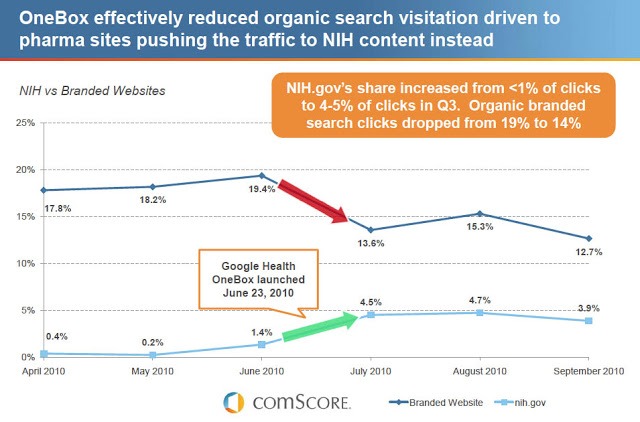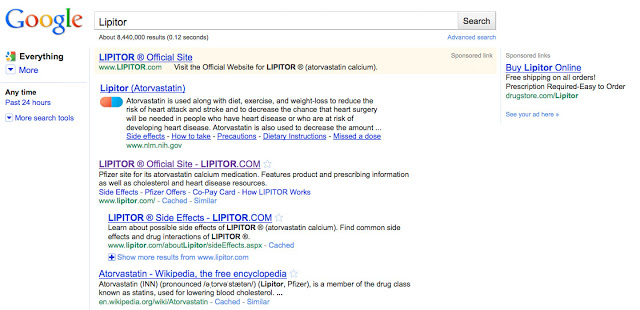At last week’s ePharma Summit, John Mangano, comScore’s Marketing Solutions Vice President, presented data suggesting that Google’s OneBox NIH Rx ads “effectively reduces organic search visitation driven to pharma sites pushing the traffic to NIH content instead” (see chart below).
 |
| Click on image for enlarged view. |
To illustrate the OneBox format, I did a search on Lipitor and the result is shown below (click on image for an enlarged view):
Just below the paid Lipitor ad at the top is the NIH OneBox “ad,” which is not really an ad because it is not a paid placement. But I’ll just call it an ad because it looks like one and perhaps Google users may think it’s an ad.
When the OneBox “ad” format was introduced in June, I asked “Will these NIH ads compete with drug company’s paid search drug ads, not to mention natural search results? Or can the two work in concert to increase the clickthrough rate on the paid ads?” (see “Finally, A Google Drug Search Ad Format That Has All FDA Could Want… But Pharma Can’t Use It!“).
Mangano did not mention any effect that OneBox Rx ads may have on paid search Rx ads. But it is logical to conclude that Google stands to gain paid ad revenue when pharma marketers have to compete with OneBox ads by buying more paid search placements to make up for the loss of organic search visits.









![6 Digital Tools at the Center of Healthcare Digitalization [INFOGRAPHIC]](http://ec2-54-175-84-28.compute-1.amazonaws.com/pharma-mkting.com/wp-content/uploads/2021/04/6DigitalTools_600px-100x70.jpg)




